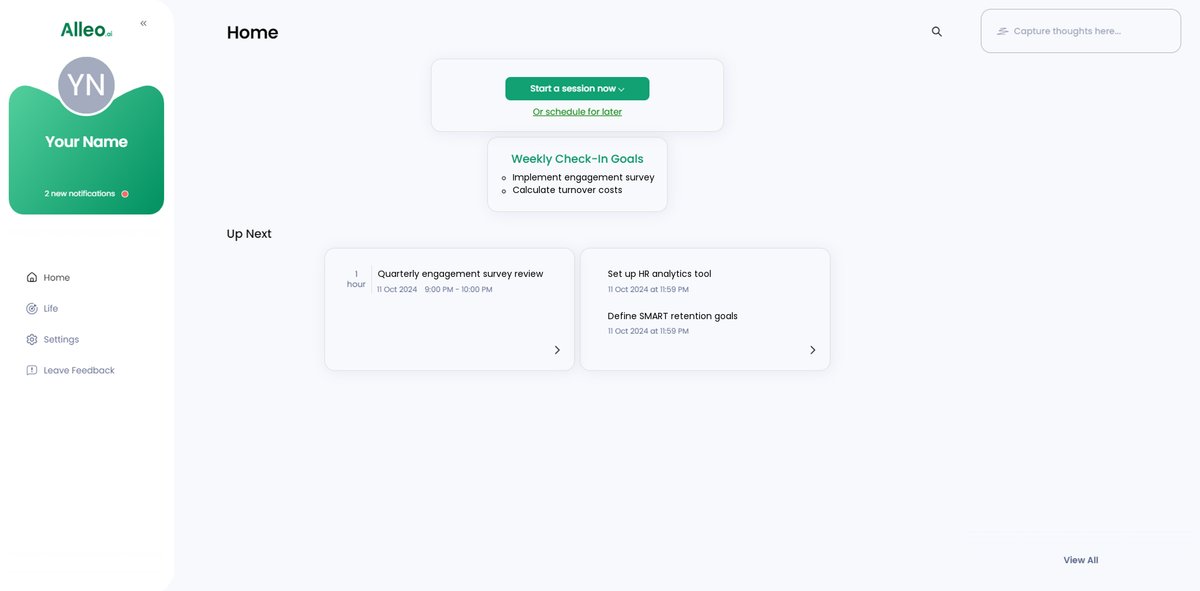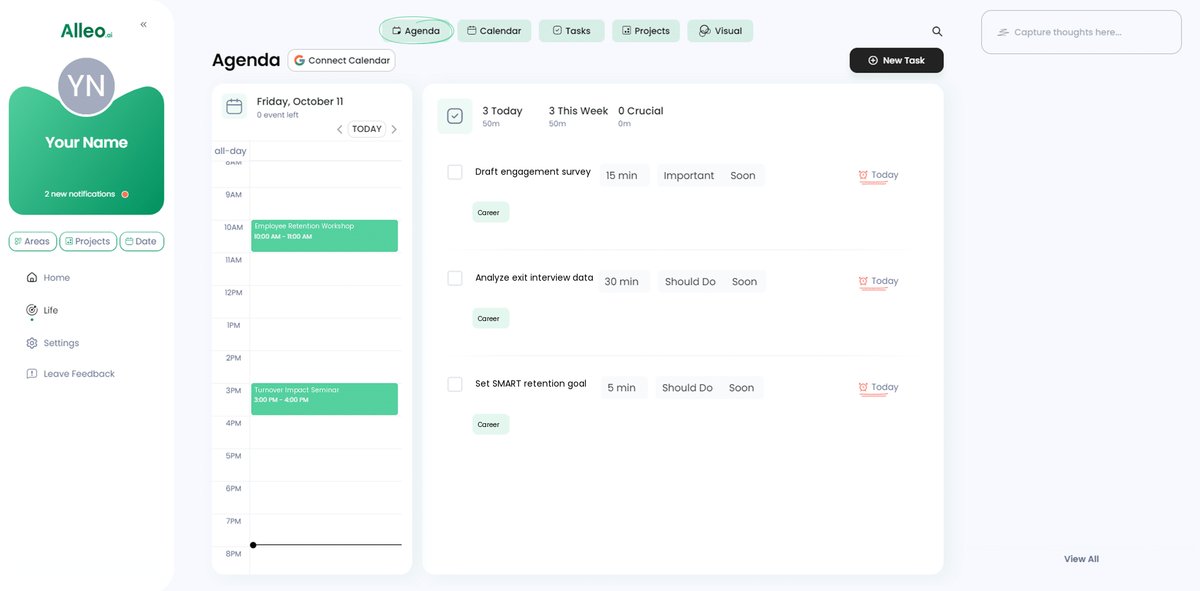Revolutionize Your Approach: 5 Powerful Strategies for HR Managers to Measure Employee Turnover Impact
Are you struggling to quantify and communicate the full impact of employee turnover in your nonprofit organization? Measuring employee turnover impact can be challenging, especially when resources are limited.
As a life coach, I’ve helped many professionals tackle these very challenges. In my experience working with nonprofit leaders, the struggle to measure and address turnover, including calculating turnover rates and analyzing workforce stability, is common.
In this post, you’ll discover specific strategies to measure and communicate employee turnover impact effectively. From employee satisfaction surveys to productivity tracking, I’ll guide you through actionable steps to improve talent management and reduce the cost of employee turnover.
Let’s dive in.

The Hidden Costs of Employee Turnover
Measuring employee turnover impact is crucial for organizations. Employee turnover is more than just an inconvenience. It’s a significant drain on your resources, affecting both direct and indirect costs like recruitment, onboarding, and productivity impact of turnover.
Many nonprofit leaders face a unique challenge. Limited resources make it tough to manage these costs effectively, making workforce stability analysis essential.
In my experience, turnover also impacts organizational morale and causes stress among remaining staff. This ripple effect can disrupt team dynamics and overall efficiency, highlighting the importance of employee retention metrics.
For nonprofits, where every dollar and hour count, these challenges are magnified. Understanding and addressing the cost of employee turnover is crucial for maintaining stability and growth, often involving exit interview insights and employee satisfaction surveys.
A Roadmap to Measuring Employee Turnover Impact
Overcoming this challenge requires a few key steps. Here are the main areas to focus on to make progress in measuring employee turnover impact:
- Implement regular engagement surveys: Gather consistent data on employee sentiment to identify early warning signs and improve employee retention metrics.
- Calculate true turnover costs using HR analytics: Utilize tools to calculate and present detailed cost of employee turnover.
- Conduct targeted exit interviews: Develop a standardized process focusing on key turnover drivers and gather exit interview insights.
- Track productivity metrics before and after exits: Monitor productivity to quantify the productivity impact of turnover.
- Use SMART goals to measure retention efforts: Set and track specific, measurable goals for reducing turnover rate and improving workforce stability.
Let’s dive in!
1: Implement regular engagement surveys
Regular engagement surveys are vital for measuring employee turnover impact and understanding employee sentiment. These surveys help identify early warning signs of turnover and contribute to workforce stability analysis.
Actionable Steps:
- Schedule quarterly surveys to gather consistent and actionable data on employee retention metrics.
- Use survey insights to pinpoint issues and address them before they lead to increased turnover rates.
- Share survey results with leadership to foster transparency and prompt strategic action on employee satisfaction surveys.
Explanation: Regular engagement surveys help you stay ahead of potential turnover issues. By consistently gathering and analyzing employee feedback, you can address concerns early and improve talent management and turnover strategies.
This proactive approach aligns with industry trends, like those highlighted in Achievers’ retention strategies, showing the importance of engagement in reducing the cost of employee turnover.
Key benefits of regular engagement surveys:
- Early detection of potential issues affecting workforce stability
- Improved employee communication and succession planning strategies
- Data-driven decision making using predictive analytics for turnover
These steps will help you create a healthier, more transparent workplace environment, setting the stage for improved retention and minimizing the productivity impact of turnover.

2: Calculate true turnover costs using HR analytics
Understanding the true turnover costs using HR analytics is crucial for measuring employee turnover impact and optimizing resources in your nonprofit organization.
Actionable Steps:
- Utilize HR analytics tools to calculate direct and indirect turnover costs accurately, including productivity impact of turnover.
- Create custom reports with detailed turnover rate calculation data tailored for leadership presentations.
- Benchmark turnover costs against industry standards to identify improvement areas and enhance workforce stability analysis.
Explanation: Accurately calculating turnover costs helps you understand the financial impact and make data-driven decisions. By using HR analytics and creating custom reports, you can present compelling employee retention metrics to leadership.
This approach aligns with industry trends, as highlighted in Culture Amp’s guide, emphasizing the importance of data-driven strategies in retention efforts.
Implementing these steps will provide a clear financial picture of turnover, helping you advocate for necessary changes and justify investments in employee engagement and talent management and turnover strategies.

3: Conduct targeted exit interviews
Conducting targeted exit interviews is essential for understanding why employees leave and addressing key turnover drivers, which is crucial when measuring employee turnover impact.
Actionable Steps:
- Develop a standardized exit interview process focusing on key turnover drivers and employee retention metrics.
- Train HR managers to conduct insightful and empathetic exit interviews to gather valuable exit interview insights.
- Analyze exit interview data to identify patterns and actionable insights for workforce stability analysis.
Explanation: Conducting targeted exit interviews helps you gather valuable insights into turnover causes. By analyzing this data, you can address underlying issues and improve retention, ultimately reducing the cost of employee turnover.
This approach aligns with industry trends highlighted in Inspirus’ turnover solutions, emphasizing the role of data-driven strategies in retention efforts and measuring employee turnover impact.
Common themes in exit interviews:
- Career growth opportunities and succession planning strategies
- Work-life balance concerns impacting employee satisfaction
- Management and leadership issues affecting talent management and turnover
These steps will help you create a more engaged and satisfied workforce, reducing turnover rates and improving your overall turnover rate calculation.

4: Track productivity metrics before and after exits
Monitoring productivity metrics of employees before and after they exit is vital to measuring employee turnover impact and quantifying its true effects on the organization.
Actionable Steps:
- Implement a system to monitor productivity levels of departing employees as part of your employee retention metrics.
- Compare productivity metrics before and after employee exits to quantify the impact and calculate the cost of employee turnover.
- Use this data to advocate for retention strategies and justify investments in employee engagement, contributing to overall workforce stability analysis.
Explanation: Tracking productivity metrics helps you understand how turnover affects overall performance. By comparing productivity before and after exits, you can present compelling data to leadership on the productivity impact of turnover.
This method aligns with modern trends, such as those discussed in Stratus HR’s insights on turnover impact, emphasizing the importance of data-driven approaches in talent management and turnover analysis.
These steps will provide a clear picture of turnover’s effects, enabling you to make informed decisions and improve retention through effective succession planning strategies.

5: Use SMART goals to measure retention efforts
Setting SMART goals is essential for measuring employee turnover impact and improving retention efforts effectively.
Actionable Steps:
- Set specific and measurable goals: Define clear objectives like reducing turnover rate by 10% in six months using employee retention metrics.
- Regularly review and adjust: Monitor progress against your goals and make necessary adjustments to stay on track with workforce stability analysis.
- Celebrate small wins: Recognize and celebrate milestones to keep the team motivated and aligned with retention objectives and reduce the cost of employee turnover.
Explanation: Using SMART goals ensures that your retention efforts are focused and measurable. By setting specific, measurable, and achievable targets, you can track progress and make informed adjustments to minimize the productivity impact of turnover.
According to LinkedIn’s retention strategies, SMART goals are crucial for maintaining a motivated and aligned team.
Elements of effective SMART goals:
- Specific and clearly defined objectives for measuring employee turnover impact
- Measurable outcomes and metrics for talent management and turnover
- Realistic and achievable targets based on exit interview insights
Incorporating these steps will help you systematically improve retention and achieve long-term success in measuring employee turnover impact.

Partner with Alleo to Tackle Turnover Challenges
We’ve explored the challenges of measuring employee turnover impact and the steps to address them. But did you know you can work with Alleo to make this journey easier and faster?
Setting up an account with Alleo is quick. You’ll start with a free 14-day trial—no credit card required.
Once signed up, create a personalized plan tailored to your nonprofit’s needs. Alleo’s AI coach will guide you through each step, from scheduling employee satisfaction surveys to setting SMART goals for workforce stability analysis.
Your coach will follow up on your progress. They’ll handle changes and keep you accountable via text and push notifications, helping you implement effective succession planning strategies.
This ensures you stay on track and achieve your retention objectives while improving your talent management and turnover processes.
Ready to get started for free and begin measuring employee turnover impact?
Let me show you how!
Step 1: Log In or Create Your Account
To begin addressing employee turnover in your nonprofit, log in to your Alleo account or create a new one to access our AI coach and start your free 14-day trial.

Step 2: Choose Your Retention Goal
Select “Setting and achieving personal or professional goals” to focus on reducing employee turnover in your nonprofit. This option will help you create specific, measurable targets to address the turnover challenges discussed in the article, allowing you to track progress and make data-driven decisions to improve retention.

Step 3: Select “Career” as Your Focus Area
Choose “Career” as your primary focus area in Alleo to address employee turnover challenges, allowing you to access tailored strategies and insights specifically designed to improve retention and workplace satisfaction in your nonprofit organization.

Step 4: Starting a coaching session
Begin your journey with Alleo by scheduling an intake session, where you’ll collaborate with your AI coach to create a customized plan for addressing employee turnover and improving retention in your nonprofit organization.

Step 5: Viewing and managing goals after the session
After your coaching session, easily review and manage the SMART goals you discussed by accessing them on the home page of the Alleo app, allowing you to track your progress in reducing employee turnover and improving retention efforts.

6: Adding events to your calendar or app
Use the AI coach’s calendar and task features to schedule and track your progress on implementing turnover reduction strategies, such as engagement surveys and exit interviews, ensuring you stay accountable and can easily monitor your nonprofit’s retention efforts over time.

Taking the Next Step in Reducing Employee Turnover
As you’ve seen, measuring employee turnover impact requires a multifaceted approach. Each strategy we discussed is a piece of the puzzle in improving employee retention metrics.
You now have a roadmap to measure and communicate the impact of turnover. Implement these strategies consistently for the best results in workforce stability analysis.
Remember, you’re not alone in this journey of managing the cost of employee turnover. Alleo is here to help with turnover rate calculation and productivity impact assessments.
With Alleo, you can streamline these processes and focus on what matters most—your team. Give it a try with our free 14-day trial to enhance your talent management and turnover strategies.
Start today and see the difference it can make in measuring employee turnover impact. Your nonprofit’s success depends on it.